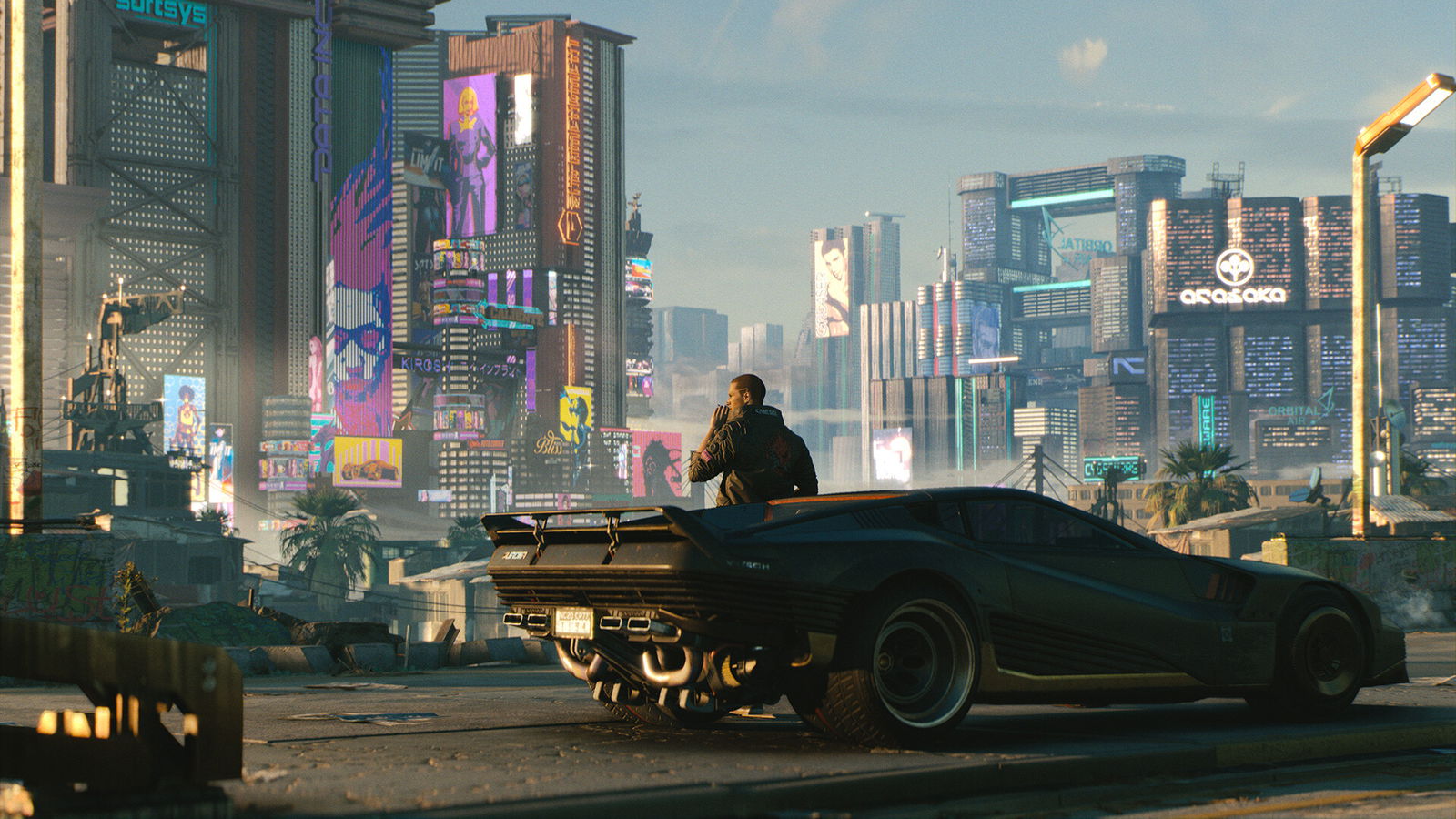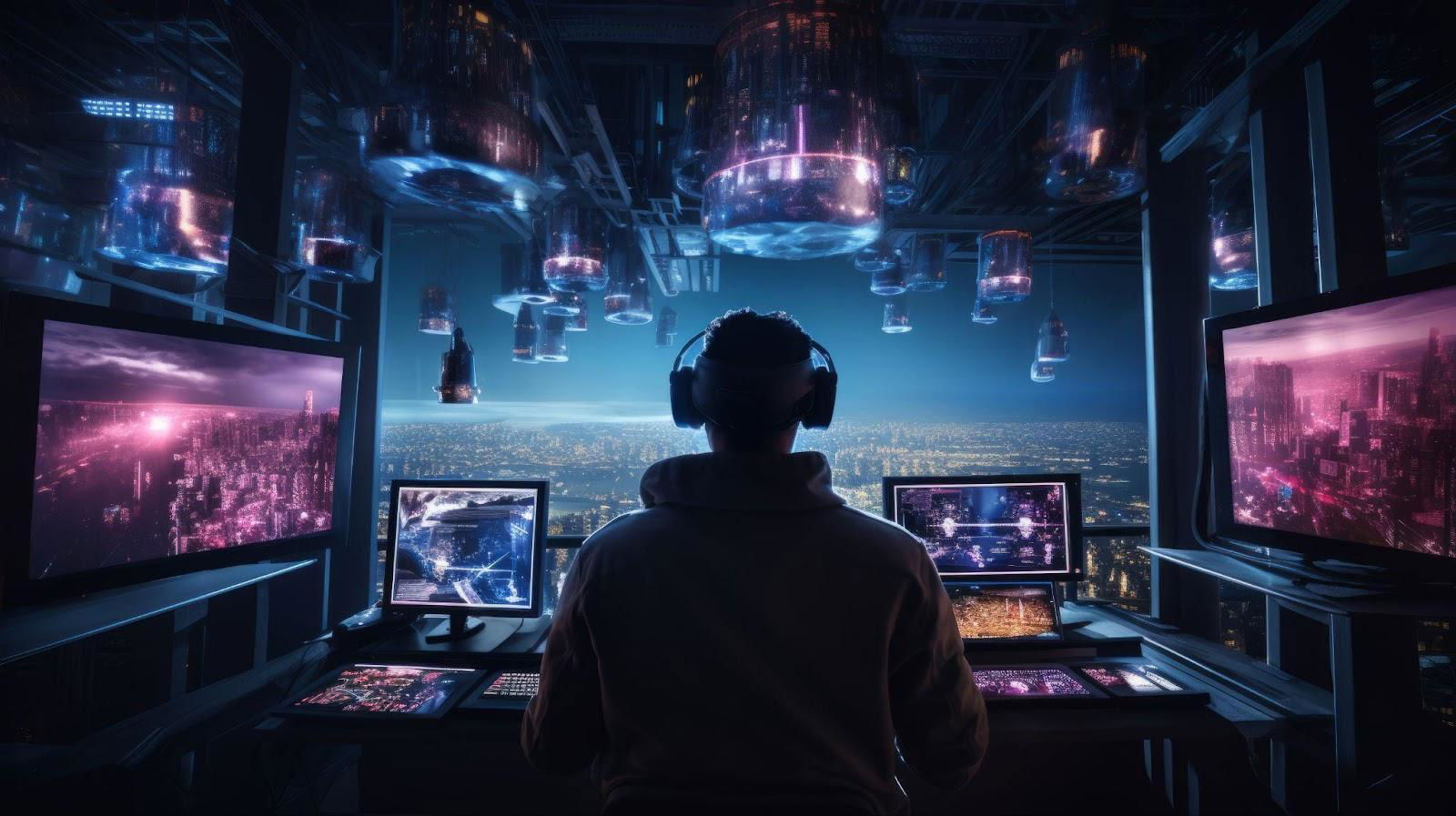Full respect to the elders, but video games have come a long way since the Pac-Man days: pixelated characters and simple mechanics are now stylistic choices, not technical necessities. What started as, let’s say, blocky, pointy forms has evolved into stunning, anatomically correct details.
Okay, cheeky jokes aside, video games have matured as an art form and now offer virtual worlds with rich storytelling and immersive gameplay. Game design doesn’t, however, end at realistic graphics, even if that’s the aspect an average person would notice first.
AI’s Role in Game Development
The gaming industry has seen a dramatic transformation in development methods over the past few decades. AI use in game development remains a touchy subject, but as a technological aid, it has been around for a while now—in everything from character behaviour to world design, in fact.
AI works alongside developers, not in their place, simply making their jobs easier by automating tedious tasks and assisting with coding. Want an NPC to react naturally to player choices? AI’s got it covered. Need help generating text for in-game dialogue? AI, like this AI answer generator online service, can handle that, too.
Of course, there are two sides to every coin. A gamer? Just curious? Join us as we explore how AI interacts with the gaming industry.
NPC Behavior and Smarter Opponents

NPCs used to follow predictable patterns. They would walk a set path repeatedly and react the same way to every situation. Now, with AI-driven behaviour, NPCs can adapt by learning from player actions, making decisions that feel more natural. As a result, players can’t simply memorize enemy patterns, making the gaming experience more immersive. Two key techniques for achieving this are pathfinding and decision tree learning, each serving a different purpose.
Pathfinding is the method AI uses to determine the best obstacle-free path for an NPC to move from one point to another. An algorithm calculates routes based on movement cost and estimated distance. Real-time strategies, RPGs, and open-world games, where characters need to move logically without getting stuck, benefit the most from it. It gained wider recognition in strategy games like 1992’s Dune II, where units had to navigate complex terrain. “The AI is an improvement from its predecessors. Units know how to move from one point to another without getting stuck or doing weird things, like in Herzog Zwei or Nether Earth,” remarked one retrospective.
Decision tree learning, meanwhile, helps NPCs make logical decisions based on in-game conditions. Instead of movement, this AI system evaluates multiple factors — such as enemy presence or player proximity and health levels — and follows a structured tree of options to determine the best action. This system is common in fighting games, first-person shooters, and RPGs, where NPCs must react dynamically to the player’s actions.
Together, these two systems concoct responsive and lifelike AI behaviour in modern games.
Procedural Generation for Expansive Worlds
Procedural generation is used in video games to create content algorithmically rather than manually designing every element. This can include levels, environments, video game characters, quests, items and textures. The goal is to provide unique and dynamic experiences without increasing the workload on developers.
Procedural generation relies on algorithms and randomization to generate content based on predetermined rules. Instead of building each level or character individually, developers create a set of parameters and constraints that the game can then combine in endless variations.
For example, in a procedurally generated dungeon crawler, the algorithm determines the number of rooms based on difficulty level and connects them with hallways and doorways. It then spawns enemies and adds loot for balance. With aesthetic elements like textures, lighting and decorations sprinkled throughout—voilà!—the level is player-ready. And while each dungeon run is unique, it still follows a logical, enjoyable structure.
Games that use procedural generation are easier to scale. Developers can create vast open worlds without significantly increasing storage requirements. Some games allow players to input specific “seeds” to personalize their experience.
However, procedural elements can sometimes cause unintended difficulty spikes. Additionally, designing a high-quality procedural system requires careful fine-tuning. Despite this, many games successfully use it.
- Minecraft (2009) generates terrain, caves, biomes, and structures based on seed values.
- Spelunky (2008) generates randomized cave layouts with preserved progression logic.
- No Man’s Sky (2016) generates unique alien species across its many likewise generated planets.
- Left 4 Dead (2008) uses the AI Director to modify enemy placement and pacing based on player performance.
- Diablo (1996) generates unique gear with random properties.
Data Mining for Improved Player Experience

Data mining involves analyzing player behaviour to develop better mechanics and engagement—also known as predictive analytics. Developers track in-game actions, such as decision-making and difficulty spikes, and adjust level design or balance challenges accordingly. If data shows players frequently quitting at a specific stage, designers can tweak mechanics to keep them engaged. Multiplayer games like League of Legends use data analysis to improve matchmaking, making matches more competitive by pairing players with similar skill levels.
Data mining also helps detect bugs and shape monetization strategies. Developers examine crash reports and performance metrics to fix technical issues, as seen in Cyberpunk 2077’s post-launch updates. Free-to-play games study spending habits to curate effective in-game stores and promotions. As AI-driven analytics improve, games adapt more dynamically, but concerns about data privacy and consent remain.
Ethical and Technological Considerations
AI’s growing presence causes mixed reactions. Job displacement concerns float around. A recent survey revealed that 30% of developers believe AI-powered tools are doing more harm than good. Unionization has gained momentum within the industry. Several video game studios have successfully unionized, including notable companies like Activision Blizzard. These efforts aim to improve job security and working conditions and mitigate the impact of emerging technologies, including AI. Industry figures like Harrison Ford have highlighted the importance of human talent, stating that AI cannot replicate the depth and nuance brought by real actors and artists.
In the United States, the animation sector (including game development) employs over 220,000 professionals. The Bureau of Labor Statistics projects that employment for special effects artists and animators will grow by 4% from 2023 to 2033, aligning with the average growth rate for all occupations. If there is projected growth, why worry then? It isn’t unwarranted. The industry experienced significant shifts in employment trends recently.
The past few years have been turbulent. In 2024, game development faced unprecedented shake-ups, with nearly 40% more developers losing their jobs compared to 2023. Game studios have collectively cut 10% of their workforce, and the trend may continue into 2025. Factors contributing to these layoffs include economic pressures connected to high-profile game failures.
Other ethical concerns around using AI, especially generative AI, in gaming, include maintaining originality. AI can analyze trends and generate new game ideas, but if developers lean too heavily on AI-driven design, games might start feeling formulaic. The gaming industry thrives on fresh ideas, and that requires human imagination. AI-generated content overall must be monitored. It is a tool, not a replacement for human expertise. Ethical AI integration with the preservation of human creativity and employment should be a critical focus for industry stakeholders.
The Future of AI in Gaming
What we want to see are smarter NPCs, more immersive worlds, and maybe even AI-powered game testing that helps developers catch bugs faster. AI might assist with game balance and help developers create fairer multiplayer experiences by analyzing in-game data in real time.
What we don’t want to see is AI completely taking over. It’s not a magic wand that can replace human creativity. The best games come from our emotions and experiences — things AI can’t replicate. AI can help bring ideas to life faster, but it’s up to human developers to make games truly special. Maybe, the future of game development isn’t AI or humans — it’s both, working together to push gaming to new heights.



